Posts Tagged sprinkler system
Turn to the Pros for a Professional Sprinkler System Design
Xeriscaping is a water-wise approach to gardening that reduces water use and maintenance in your front and backyards. An efficient sprinkler system design helps you maintain a healthy landscape, saves you money on your water bill, and helps maintain your home’s curb appeal.
Working with a professional sprinkler system design and installation firm has many benefits, including:
- Working with certified designers who can help you create a personalized, economical solution for your sprinkler system.
- Access to experts who understand the most efficient layout for irrigation system elements.
- Layout designs and maps that are minimally invasive.
- Identifying and maximizing coverage zones and spray patterns.
- Accurately measuring the landscape so the job is done right the first time.
Basics of Sprinkler System Design
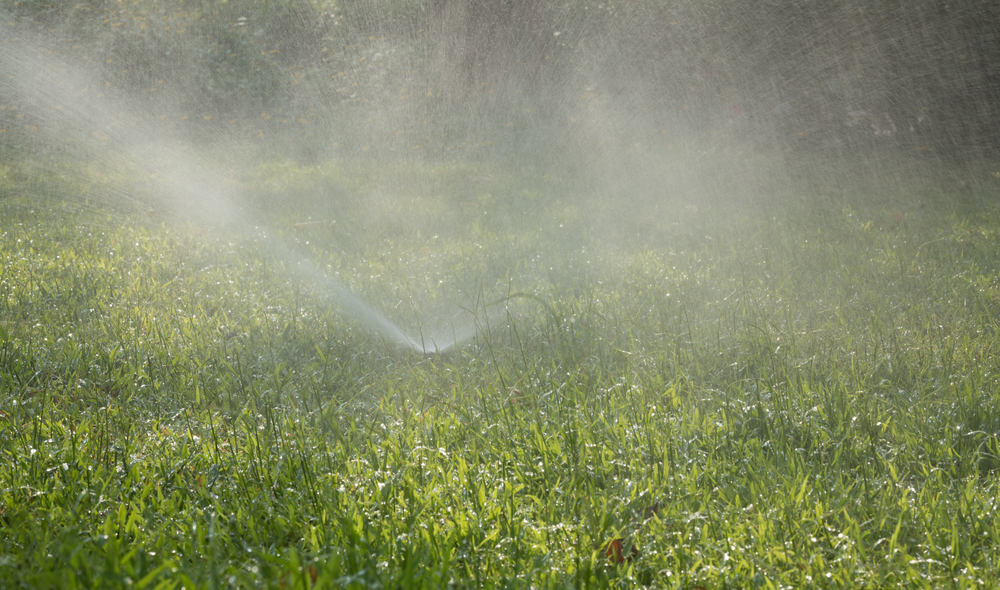
There’s a lot that goes into designing, installing, and maintaining the right sprinkler system for your home. In addition to the traditional spray system, low water use irrigation systems often utilize features like smart timers and drip systems.
A good irrigation system not only improves water use efficiency, it also protects the water’s quality and is sensitive to the environment. The goal is to maintain a healthy, functional landscape without exceeding minimal water requirements of the plants or the maximum water allowance in your area.
Here are some of the points you should discuss with your sprinkler system designer .
- What are the ideal areas for the plants you want to install and how will the system be designed to avoid wasting water on plants and shrubs that require different needs?
- Is your home’s water pressure able to handle the proposed sprinkler system components? For example, high pressure can cause water to drift and blow away from the area you want to water.
- Does it make sense to install a rain sensor that pauses the system whenever it rains?
- Does the design work to prevent overspray onto patios, decks, driveways, paths, and sidewalks?
You’ll also want a watering schedule for your timed system. One of the greatest recent innovations has been the introduction of smart controllers into sprinkler system design. These systems decrease water use by drawing on data from weather and soil moisture sensors to accurately determine your landscape’s water needs, delivering just enough moisture at just the right time. You can even monitor and control different zones from your mobile device!
Learn More
Designing, installing, and maintaining a sprinkler system is not a small investment but it can be a smart one that will serve you for years to come. No one knows better than California homeowners that water is an extremely valuable resource for all our communities. Working with a professional sprinkler system design and installation company like DK Landscaping ensures you get an irrigation system that is perfect for all your landscape needs.
If you’re ready to get started on designing and installing a new water-smart irrigation system for your Sonoma County home, contact us today. We’d love to show you how a sprinkler system creates not only a more beautiful yard but a more beautiful life for you and your family!
Tips for the Best Sprinkler System Design
Your sprinkler system is essential for keeping your yard lush and healthy. When you invest in the best sprinkler system, you reduce your water usage and the time you spend tending your lawn. Here are some tips for the best sprinkler system layout for a hassle-free, flourishing yard.

Determine the Size of Your Yard
Knowing the size of your yard is the first step in designing your sprinkler system. The yard size determines the size of your sprinkler system, the number and types of pipes, valves, manifolds, controllers, and the number of nozzles to use. When measuring your lawn, include the driveway, walkways, outdoor sheds, and your house.
Measure the Water Pressure
Your local water authority can give you a report on your property’s water pressure. But since the pressure may vary from one point across your yard to the other, measure the water pressure and gallon per minute from different locations. Hook a water gauge to an outdoor spigot, and then turn it on fully to detect the water pressure.
Measure the gallons per minute( GPM) water flow in your property by placing a gallon under a tap and recording the time it takes to fill up with water when you turn on the tap to full blast. The water pressure and GMP determine if there will be sufficient water flow in your sprinkler system to irrigate your yard.
If the pressure is low, you may need to operate sections of the sprinkler system separately. This is not a problem since the sprinkler sections serve areas with different watering needs.
Determine Your Hydrozones
Different parts of your property have varied watering requirements based on the soil type, type of plants, and shade covering. Shady areas require less watering than the areas that receive sunlight all day.
Besides, native plants may need less water, the same way clay soil needs less water than sandy soil since it holds water better. These hydro zones will help you set different watering frequencies on your sprinkler system.
Draw Your Sprinkler System Layout
Determine the layout of your piping, nozzle heads, valves, and irrigation controller. Draw your sprinkler system design on graph paper to a scale to ensure your measurements are accurate. This will tell you the number and size of fitting you require.
Select Your Sprinkler Heads
Pick sprinkler heads from the same brand since each brand designs sprinkler heads differently. You may need different sprinkler head designs to suit your hydro zones. Here are sprinkler head designs to consider:
- Spray Heads with Rotary Nozzles
They are ideal when spraying a large area. They can consistently sprinkle water to a radius of about 13-30 feet.
- Rotors
Fix the same size of rotors in each hydro zone for consistency. The rotor head size will depend on the area and radius you want it to reach. They can deliver water to 15 feet to 50 feet radius.
- Fixed Spray
Fixed sprays reach a radius of about 6 to 18 feet, with each sprayer delivering water to the same area consistently. Arrange your fixed sprayers to ensure a subsequent sprayer begins where its predecessor ends.
- Specialty Patterns and Bubblers
These sprayers deliver water to special landscapes areas such as lawn end strips, shrubs, and trees. They can throw water as high as 15 feet and up to 5 feet radius.
- Drip Irrigation
This sprinkler system consists of many small emitters that deliver water directly to a plant. They are laid on the ground in landscape beds and ground covers.
Acquire Your Sprinkler System Parts
Buy your sprinkler system parts from the same brand to ensure they integrate well. Ensure you pick the correct sizes and types for each hydro zone. You will need pipes, nozzle heads, manifolds, irrigation controllers, and valves.
Layout Your Sprinkler System
Follow your design sketch to lay out and join the sprinkler parts for each hydro zone. You can use common valves for small nozzle heads. You can also connect several valves to one controller.
Test and Adjust
Once you have assembled your sprinkler system, test if the sprinkler system layout works as expected. Note any anomalies and rectify them.
Test if the sprinkler system delivers water concurrently to all the parts of your yard or there are parts where the water pressure is insufficient. Some parts of the sprinkler may deliver water well when operated individually if they are affected by low water pressure and GPM.
Set your controllers appropriately to meet the watering frequency needs for each hydro zone. To get the best out of your sprinkler system layout, work with lawn experts with experience in designing, laying out, and maintaining sprinkler systems.
Are you looking for a reliable landscape maintenance company to help you with your sprinkler system design? Reach out to us. We will test your water pressure and GPM to determine the best sprinkler system parts and layout.
We will also help you identify your hydro zones for the best sprinkler system layout. Contact us today to discuss your landscape maintenance project.
Three Irrigation System Maintenance Tips To Grow Green Grass
It is always amazing to see your landscape thrive with green grass. However, the work that goes into ensuring that your landscape remains as healthy as you want it to be should never be ignored. Among the easily forgotten parts of landscaping is the maintenance of irrigation systems. Without enough care, a damaged irrigation system can result in your lawn getting excessively irrigated or failing to get enough water.
Here is how to maintain your irrigation system:
Perform Regular Checkups

You should inspect your irrigation system a couple of times each season. Ideally, the first check should be at the start of the season, with the next one somewhere in the middle. If possible, try checking the system each month. You should confirm that the controller is plugged in and functional, correct the date and time, ensure that the wires and connectors are still connected, and replace the backup batteries. Also, it might be ideal to turn on each individual green grass zone, checking for damage and leaks.
Flush The System Regularly
If left unattended, your irrigation system can become clogged. Clogging can arise from the accumulation of debris, as well as the use of contaminated water and regular wear and tear. Before the start of any season, flush your irrigation system to get rid of this accumulated debris.
This will allow water to flow smoothly through the pipes as well as the nozzles. Aside from flushing, take measures that increase the efficiency of the system’s filtration, install screens on every sprinkler head, and replace any clogged nozzles.
Take Care Of The Sprinkler Heads
Assuming that your irrigation system’s sprinkler heads are in splendid shape can be a mistake. Sprinkler heads go through wear and tear throughout their lifetime, which increases their chances of the sinking or the breaking of the heads.
Some of the key reasons behind wear and tear include damage from lawnmowers, improper installation, shifting of the soil, and regular wear and tear. For you to maintain them optimally, you should replace the missing or damaged heads before proceeding to water your lawn. It is better to install your irrigation system on swing pipes as there is a reduced chance of damage since they ‘float’ within the soil.
A damaged irrigation system might be the reason behind your grass having brown spots, or failing to grow healthily from being overwatered. Other than ensuring that you can enjoy green grass, maintaining your irrigation system also helps preserve water. For a better experience watering your lawn, consider purchasing smart irrigation systems. Contact us for more information.
Irrigation 101: The Importance of a Good Sprinkler System Design
A good sprinkler system is one that satisfies your home’s landscape watering requirements, letting it flourish beautifully while saving large amounts of water and money. The benefits of investing in professional sprinkler system design are numerous:
- You no longer need to worry about watering at the proper times.
- Plants, tree, and ground covers get the right amount of water.
- Over and underwatering is virtually eliminated.
- A healthier landscape improves your home’s value.
Every sprinkler system we design is done with the xeriscape principles of promoting water conservation and reducing the need for regular maintenance in mind.
Plot and plan the perfect sprinkler system design
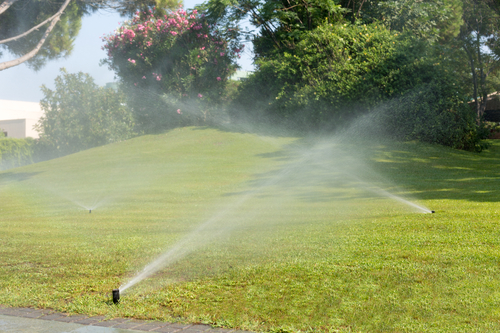
There’s a lot that goes into designing a good sprinkler system. Flow, working pressure, pipe sizing, water velocity, and friction loss must all be taken into consideration. There’s also valves, timers, and irrigation heads to think about. Add it all up, and it’s easy to see why having a pro handle it is a great idea!
Here’s a brief rundown on how a typical sprinkler system design plan comes together.
Measure and design
The first step in any sprinkler system design is measuring the property then plotting where fixed elements like your home, the driveway, paths, fences, patios, and decks are located. Next, current and future lawns, shrubs, ground covers, trees, and other plantings are added to the drawing. The landscape is then divided into areas such as front yard, back yard, side yard, shrub areas, lawn areas, and so on.
System design capacity
It’s not as complicated as it sounds. To design an automatic sprinkler system, you need to know how much water is available to irrigate your landscape. Most systems are designed to use water supplied by the city or township, but some people draw their water from wells or lakes. Determining capacity involves measuring water pressure (PSI) and water volume (GPM) then using those figures to make sure the most efficient watering system is put in place.
Product selection
Sprinkler heads and valves are two of the most important components. There two broad types of sprinkler heads:
- Rotating stream spray sprinklers that operate by rotating streams of water back and forth or in circles over the landscape.
- Small area fixed spray sprinklers that spray a fan-shaped pattern of water over a fixed radius.
Many homeowners also include a drip system in their sprinkler systems and most designs include a combination of all three types. Which ones are placed in which locations depends on water pressure, space, and area shapes like curved pathways or raised beds.
We’re sometimes asked if one system is less expensive than the other. In our experience, it tends to work out the same. Rotor heads require less pipe and trenches, but the rotors themselves cost more. Spray heads may be less expensive, but they need more pipe, trenches, and valves.
Whichever design you select, the sprinklers are then divided and placed into zones that are irrigated at different times of the day, taking into consideration things like sun exposure, plant types, and watering needs.
Create the perfect xeriscape sprinkler system
A well-designed sprinkler system design is sure to improve the health, appearance, and value of your landscape. If you’d like to learn more about our sprinkler system design services, contact us online or give us a call at 707.280.3632. Our professional team sprinkler design team is ready to give you the cost-effective, efficient, and long-term landscaping irrigation solution you’ve always wanted.
What is Drip Irrigation and Its Advantages?
 You may have heard the phrase “drip irrigation” thrown around and not been able to make heads or tails out of it. Fortunately, drip irrigation isn’t that complicated a concept to really understand.
You may have heard the phrase “drip irrigation” thrown around and not been able to make heads or tails out of it. Fortunately, drip irrigation isn’t that complicated a concept to really understand.
What is Drip Irrigation?
Irrigation is simply the process of artificially applying water to land or soil in order to stimulate growth. Farmers and property owners around the country rely on irrigation to create fuller crops or more appealing lawns.
Drip irrigation, also referred to as trickle irrigation, is a method of irrigation that’s extremely environmentally friendly. This is because drip irrigation applies water directly to the plant’s roots, root zone or the soil itself.
The fact that drip irrigation sends water directly to the surface that needs it most with a plastic device known as an emitter is especially relevant today. Parts of California, Texas and the Southwestern United States are experiencing their worst droughts in years, so a more intelligent irrigation system is a must.
Drip irrigation actually uses tubes and hoses to efficiently send water to a plastic emitter, which in turn sends water directly onto the plant’s roots or soil’s surface. This whole process saves a ton of water and fertilizing material.
More Advantages of Drip Irrigation
Even for farmers or property owners who like using fertilizer, drip irrigation allows you to retain nutrients while using less fertilizer – all the while achieving even better results!
Drip irrigation also allows you to keep the moisture level constant between the root zone and field capacity. And just to clarify, the term “field capacity” is simply the amount of moisture in the soil after the excess water has drained away.
Here’s some more good news for anyone who wants to try out drip irrigation – drip irrigation ensures less soil erosion and fewer weeds grow on your property. For farmers, this is a huge boon and directly increases their crop yield and profits. For regular property owners, this leaves your lawn looking crisp, green and lush.
For those concerned about rising energy prices, you’re bound to like drip irrigation as well. The process of drip irrigation is extremely water efficient and operates under less pressurization than most other types of pressurized irrigation, which translates to money saved on utility bills.
Because of drip irrigation’s higher efficiency, you’re also talking about smaller labor costs compared to other forms of irrigation.
Control in Your Hands
Due to the fact that controllable amounts of water make their way to the soil’s surface or the roots of plants, drip irrigation puts far more control into your hands.
You can regulate the amount of water that gets sent to each individual plant or section of your property by regulating the water pressure going to each output nozzle.
Drip irrigation is saving you water all the while as well since drip irrigation is estimated to use less than half the water of conventional sprinkler systems. So, you’re using less water and experiencing less nutrient runoff and soil erosion: This is definitely a recipe for long-term success.
Drip irrigation can even be set to a timer so that you can fully automate the watering process or cut it on/off at your discretion throughout the day. A drip irrigation system is highly adaptable and can be changed literally overnight to better suit the changes taking place on your property.
You can find out more about drip irrigation or set up an appointment by getting in touch with a Xeriscape lawn care professional today.
Sprinkler System Design That Saves You Money
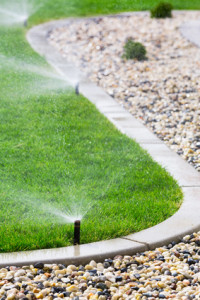 When it comes to keeping your landscaping looking lush and healthy, your sprinkler system design could make all the difference. If your plants are getting too much water you may encounter problems such as mold, rotting, and even yellowing of your plants. Likewise, if your plants are not getting enough water, they can quickly turn yellow and brown, dying back and leaving you with large dead patches in your garden.
When it comes to keeping your landscaping looking lush and healthy, your sprinkler system design could make all the difference. If your plants are getting too much water you may encounter problems such as mold, rotting, and even yellowing of your plants. Likewise, if your plants are not getting enough water, they can quickly turn yellow and brown, dying back and leaving you with large dead patches in your garden.
Sprinkler system design needs to meet all of your plants different water needs. This can be tricky, especially if you have different types of annuals, perennials, shrubs, and trees, grouped together throughout your garden. A small shrub may need water once a week, whilst the small annual flowers you have growing around the shrub may need to be watered daily, finding that balance can be hard.
Why Hire a Gardener or Landscape Team for Your Sprinkler System Design
There are many complexities when it comes to the best sprinkler system design for your garden, hiring an experienced gardener will ensure that your garden is having its exact watering needs met. Here are some of the things a good gardener will look for when it comes to sprinkler systems.
- When it comes to sprinklers there are many different types, choosing the right sprinkler head can make sure that your garden is getting the right amount of water, protecting your plants from too much or too little water. An experienced gardener or landscape expert will know which sprinkler head to use, in which areas of your garden.
- Water pressure needs to be considered when it comes to a sprinkler system, your water pressure should be evaluated and upgrades to the system should be made to account for either a lack of pressure, or too much pressure.
- Pipes will need to be placed throughout your lawn and garden. By having a professional design the pipe layout and lay the pipes, you can be sure that your current garden and lawn will be protected. You will also have peace of mind knowing that your systems pipe design will help you reduce your water usage, whilst providing your garden with the water it needs.
- When it comes to your sprinkler system design the placement of each sprinkler head is important. As previously mentioned there will be areas in your garden that need less water, while other plants or areas may need a lot of water on a daily basis. By accounting for run off, sprinkler direction, and which plants need more or less watering, an experienced gardener can place your sprinkler heads in the right position to benefit all plants in your garden.
- If you would like your sprinkler system design to be as low maintenance as possible, you may want a system that is automated. Hiring a gardener to design, install, and set up your system will make sure that your sprinkler system is running at a time that gives your garden the best chance of soaking up the water. This will make sure that you are not losing valuable water to the heat of the day, or causing disease to spread through your garden.
Contact Us Today for Your Sprinkler System Design
If you have been considering sprinkler system design for your home or business, contact our landscape maintenance company today. Our team of garden and landscape experts can help you get the best sprinkler system design, keeping your garden and landscape healthy no matter the season.
Springing Forward
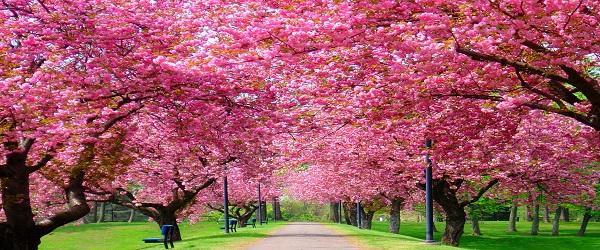
Spring is an exciting and one of the most beautiful times of the year. The days are becoming longer, the weather is getting warmer, you awake to birds chirping in the morning, and spring blooms and lush green plants come alive in your landscape.
After a long winter, your lawn and gardens may be looking a big ragged and dreary. So before you pull out your lawn furniture from storage, get in the “spring spirit” by getting your yard looking spectacular. Help your lawn, trees and shrubs get off to a healthy growing season with these six luscious landscaping tips:
1. ASSESS YOUR TOOLS: Check, maintain, sharpen and repair your landscaping tools for a smooth spring and summer experience. This includes your lawnmower, weeding/pruning tools, rake and edger.
2. CLEAN UP: Clean out dead leaves, branches, trash or anything else that could impair your garden and lawn’s growth. Prune
3. WEED CONTROL: Uproot any existing weeds you find out of flower beds and check your lawn for any weed growth, whether they’re leftover stalks from last year or brand-new shoots. Once weeds are clear, DK Landscaping recommends spending between 10-15 minutes a few times per week to prevent new weed growth in your garden.
4. FERTILIZE: Make sure your early spring fertilizer has less nitrogen and more phosphorus to promote strong roots. Be sure to keep fertilizer on target to prevent run-off, and sweep fertilizer granules that may reach pavement back onto your lawn. Give your lawn a slow, steady watering about once a week, but adjust depending upon rainfall, grass and soil type in your area.
5. MULCH: A fresh layer of mulch can take any flower bed from drab and dreary to beautiful. DK Landscaping suggests applying four inches of mulch over the top soil, which will help retain moisture and prevent growth of those pesky weeds.
6. IRRIGATION: Check your in-ground sprinkler system and make sure all your sprinklers are working properly. Remove any overgrown grass that may have covered up any part of the pop-up heads. Check the sprinkler heads for cracking and breakage from last year and have them replaced if needed.
It’s the perfect time in Northern California to gather up tools, slide into your boots, pull on your garden gloves, and enjoy that first breath of spring.
DK Landscaping specializes in landscape maintenance, irrigation, clean-up and colorscape in Sonoma County. Contact Kathy or David Lee for more information and a consultation on your landscaping (707) 280-3632.
The Art of Irrigation
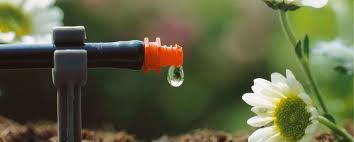
One of the challenges for a gardener is managing the proper use of water. The lack of water can be damaging, or deadly, to anything growing outside. DK Landscaping shares the art of irrigation and will help you prepare your garden for it.
Benefits of Drip Irrigation
By using drip irrigation, your garden will use less water, will require less maintenance, and help discourage less weeds and pests. You will be giving them the moisture they need, where they need it: at their root zone.
It will save you up to 90% compared to watering with a hose. It saves you time having your drip system on a timer. You control your irrigation timer and adjust it for seasonal changes (for instance, August heat in Northern California consumes the most water). Together with mulch creates an organic weed control without the use of harsh and unhealthy chemicals. Watering only the roots of your plants with drip irrigation also cuts down on water-borne pests and fungal diseases that spread by water movement.
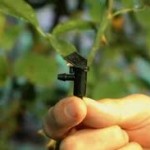
With a timer, you can control how much water your plants receive by setting up your drip system with different size emitters, which are the system’s delivery mechanism. You can use a small emitter, such as one that delivers 1/2 gallon of water per hour, at the base of small plants, such as herbs; for larger plants, such as trees, you can provide more than one emitter that delivers 3 gallons of water per hour, or more.
DK Landscaping also recommends that all valves feeding the drip system should have:
Large Filter: A small filter or no filter will result in debris clogging the system.
Pressure Reducer: Absence of it will result in emitters being blown off the main feed line. Drip systems are designed to work under low pressure (nominally between 25 PSI to 35 PSI) while normal pressure on the water main line is nominally 70 PSI.
Pressure Compensated Emitters: Pressure compensating drip emitters (PC Emitters) deliver a consistent output of water, even with increase changes in elevation or pressure due to long drip runs. PC Emitters are best used in landscapes and gardens that have drops in elevation that would cause an increase in pressure.
Emitter Hole Punch: Oval or wrongs size holes will result in leaks.
For more information and a free consultation on your irrigation system, please contact Kathy Lee at DK Landscaping. Kathy is our QWEL (Qualified Water Efficient Landscaper) Certified Irrigation Expert. We are also a certified WaterSense Partner. QWEL and WaterSense are certified by the EPA.
Irrigation Sensation
Summer is just around the corner which means, for most of us…the “dog days” are coming!
DK Landscaping brings you tips on how to beautify your landscape while maintaining the lusciousness of your lawn through irrigation.
A great lawn is a start to an exceptional landscape. Landscaping will not only make your property look better, but will also raise your property values. Adding effects and color can increase the value of your home and property by as much as 10% depending on your lawn, landscape and property.
Watering your lawn is essential to protect your landscaping investment. A residential sprinkler system improves the overall health of all plantings because of the consistent water being delivered. It not only helps manage your water usage — but you will have a greater appreciation for when your water bill arrives each month.
DK Landscaping recommends the best time to water your lawn is in the morning, before the heat of the day has set in, so moisture has time to evaporate before the evening. Watering in the evening can result in rot and fungal infections of the plant roots being left moist and cold at night. We also believe it is far better to water a lawn deeply once a week than to give it shorter periods of water more frequently.
For more information and a consultation on your irrigation system, please contact David Lee at DK Landscaping.






